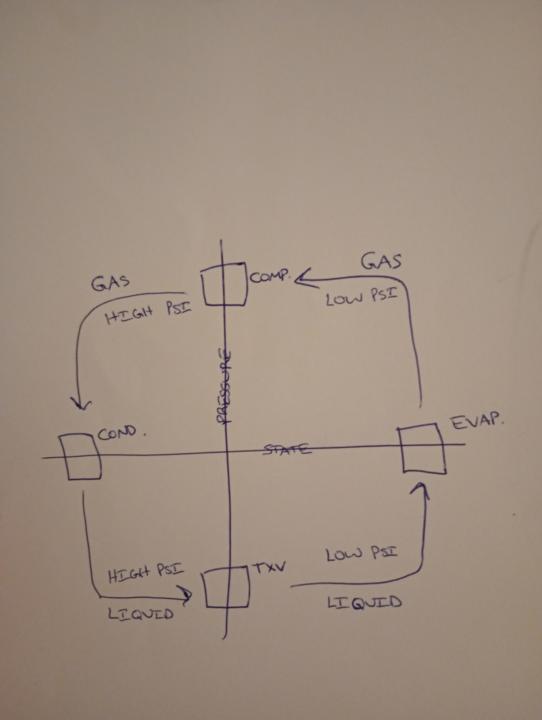Activity
Mon
Wed
Fri
Sun
Nov
Dec
Jan
Feb
Mar
Apr
May
Jun
Jul
Aug
Sep
Oct
What is this?
Less
More
Memberships
AI Automation Agency Hub
254.2k members • Free
The Unbound Brotherhood
50 members • $47/m
Torque Authority Hub
14 members • Free
5 contributions to Torque Authority Hub
LIVE Lab Starting now!
Hey guys!! We're starting in just a minute! Here's the link to join! https://www.skool.com/live/Fn4yFMqj94J
0
0
Ted's Toolbox Tip
This week I'd like to share the first '3 Laws of Automotive Service': By 'law', I mean a statement of fact, such as regarding a phenomenon which always occurs if a certain set of conditions are present. Like Newton's Laws of motion, or the Law of Gravity, for example. These laws describe how objects will always behave in specific conditions (i.e. 'what goes up must come down'). Number 1 -- The Law of Recency: This law refers to the fact that what has been done to the vehicle recently (prior to the current customer concern) has a very high likelihood of being related to the current concern. Number 2 -- The Law of Proximity: This law refers to the fact that what is physically located close to the system and/or component of concern is very likely contributing to the current customer concern. Number 3 -- The Law of Design Intent: This law refers to the fact that if the vehicle, system, or component in focus is not being operated, installed, or fastened in the manner in which it was designed to be, then problems or failure will result. Based on my 7 years of experience, I have found that the vast majority of customer vehicle concerns have something to do with one of these three Laws of Automotive Service. Let me know in the comments what you think! Do these resonate with your own experience?
1
0
Ted's Toolbox Tip
Hey guys! This week's Toolbox Tip is a rhyming couplet/phrase to help you remember how vehicle alignment angles affect drift/pull concerns. "Camber High, Caster Low, That's the way the car will go." When you perform an alignment and you discover, for example, a condition where the camber is high (more positive) on the left and low (or less positive) on the right, the vehicle will tend to drift to the left. The same is true when you have a condition where the caster is low (less positive) on the left and high (more positive) on the right — the vehicle will tend to drift to the left. If you stack these two conditions — high camber AND low caster on the left side compared to the right side, the vehicle will have a stronger pull to the left while driving. So remember, "Camber High, Caster Low, That's the way the car will go."
1
0

Ted's Toolbox Tip
Hey all! I recently came across a simple but effective way of looking at A/C refrigerant flow, I shared this on LinkedIn and figured I'd share it here also. I typically struggle with trying to remember the state of refrigerant as it passes through the system. When is it a liquid or a gas? When is it high-pressure or low-pressure? What about temperature??? I have found that the simplest method to remember is by drawing two perpendicular lines on a piece of paper to make a cross or 'plus' symbol. At the top of the vertical line draw a compressor. At the bottom of the vertical line draw a TXV or Orifice Tube (restriction device). At the far left of the horizontal line draw a condenser, and at the far right of the horizontal line draw an evaporator. The horizontal line represents the state of the refrigerant—the refrigerant above this line is in a gas state, refrigerant below is a liquid. The vertical line represents the pressure of the refrigerant—the refrigerant to the left of this line is high pressure, the refrigerant to the right is low pressure. To my brain, this is the simplest way to remember the state of refrigerant as it passes through the A/C system. The compressor takes low-pressure gas and compresses it into a high-pressure gas. As it goes through the condenser, the refrigerant loses heat and condenses into a high-pressure liquid. The restriction device (TXV or Orifice Tube) causes the pressure of the refrigerant to drop so that it enters the evaporator as a low-pressure liquid. As it passes through the evaporator, the refrigerant absorbs heat from the cabin and evaporates from a liquid to a gas. This low-pressure gas then flows back into the compressor, and the cycle starts all over again. Hope you found this as helpful as I did!

🚧 Pardon Our Dust – We’re Building Something Great 🚧
Hey everyone, and welcome to the Torque Authority Community! We’re still in the early stages of putting this space together, so you might notice a little “construction dust” while things get organized. The vision here is to build a collaborative hub where technicians, shop leaders, and innovators can share knowledge, sharpen their skills, and support each other in this industry we all love. 👉 While we’re getting things set up, I’d love to hear from YOU: - Where are you from? - What’s your current role in the automotive world? - What’s one thing you’d love to learn, improve, or discuss in this community? This is your chance to help shape what Torque Authority looks like from the ground up. Don’t be shy—we’re a small group right now, which makes it the perfect time to connect. Excited to build this with you all, — T. W. Mulder
0 likes • Sep 3
Hey all! My name is Ted and I'm one of the collaborators here in the Torque Authority Hub. I'll get this chat started by introducing a bit about myself: - I'm currently living in the Toledo Ohio area, but I've moved around quite a bit (lived in Utah, Nevada, Idaho, California, Massachusetts, North Carolina, and now Ohio -- so I'll just say that I'm from the USA haha!😄) - I'm currently working as a Field Service Engineer at General Motors - One thing I'd love to hear/discuss in this community is the pain points y'all have in the automotive service industry and what ideas you have to make it better. We've got some exciting things coming soon here in this Skool community, looking forward to sharing them with you all!
1-5 of 5


